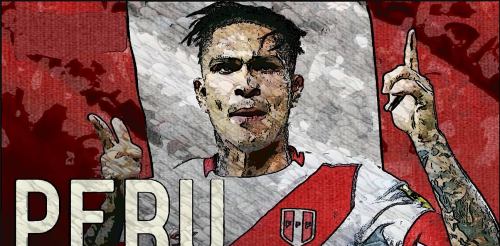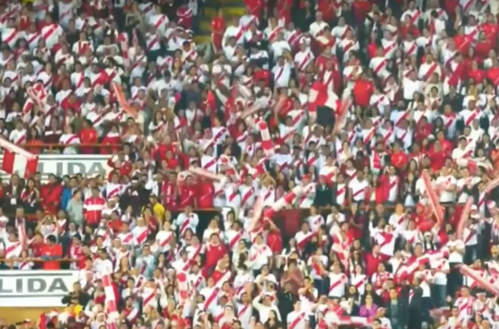INTRO.
Tonight is the night. Tonight, at 2am AEST, Peru will play its first football match at the World Cup since 1982. I was 3 years old in 1982. Tonight is huge.
I understand a lot of people won’t get it. A lot, including my partner, wonder why this is such a big deal to me. I will try to explain it here.
It’s not just about football, it’s really a bunch of things. It’s the journey here, it’s a mirror image of what it means to be Peruvian. I honestly can’t wait.
The South American qualifier is the longest of all. After Russia 2018 the teams in South America will start playing each other in 2019 to qualify for Qatar 2022. It takes almost 3 years of home and away matches against each of the countries in the confederation. A mammoth 18 matches in what is described by many as the most difficult and strategically complex of all qualifiers.
When Peru’s national male team started the campaign, it wasn’t looking promising at all.
Halfway through the qualifiers Peru sat on 8 points from 9 matches. Expectations were the usual: pretty low.
It wasn’t very long ago that it still looked pretty incredible we would return to the World Cup.
You need to understand what 36 years without qualifying is. But not only that, ending each campaign either at the bottom or 1 spot away from qualifying is a massive heartbreak for the fans. There isn’t a more loyal fan than the Peruvians.
If the relation of Peru fans and their team was a love relationship, it would be described at a toxic one. Why keep loving someone that hurts you and disappoints you every time?
HISTORICAL CONTEXT.
In 1985 we needed a win to qualify to Mexico 1986. It was Argentina who, then like now, weren’t assured of a spot. Peru’s was up 2-1 with minutes left on the clock. Pasarella got a pass and received it with the chest, squared to the muddy area and the ball is missed by the keeper, hits the post, 2 defenders rushing can’t clear it and Gareca pushes it over the line where it was waiting. It doesn’t get more dramatic than that. Except it does.
Gareca, today our coach, wasn’t picked for selection by Bilardo. Therefore, the man who gave the Argentina of Maradona the chance to be a part of the tournament where they would become World Champions for the second time, was not selected to go to Mexico. That has to mark you somehow.
After 1985 Peru was in the dark alley of a civil war and football was no one’s priority. Back then our team became well acquainted with the bottom of the table and the sporting joys of the country were given to us by the Olympic female volleyball team, who won silver at the Seoul 1988 Olympics.
Our next close call was in 1997 on the qualifier for France. The coach was Oblitas, one of Peru’s great players who was in fact part of the team that tied with Argentina 2-2 in 1985 and almost went to Mexico.
Peru was again fighting for the last spot as was the Chile of Marcelo Salas and Ivan Zamorano. We were fourth and needed a tie in Santiago’s Estadio Nacional to qualify.
In Peru’s football folklore this is often referred to as sad day in the same terms that an economist refers to the 1930’s Great Depression. Chile organised a very aggressive welcome to our team, who had beat them 2-1 in Lima. Chile was coming from 2 defeats against Uruguay and Argentina and were 5th, behind us but with a chance to qualify.
Our intimidated team lost 4-0 and Salas scored 3 goals. Our self-esteem was nowhere to be found and we missed the chance to qualify again to the WC. Chile tied in points with us but had a better goal difference. We still managed to beat Paraguay at home but Chile defeated Bolivia 3-0 and went to France.

PRESENT.
It would be Bolivia and Chile in fact, who would play a significant role in our current WC presence. In typical Peruvian fashion, a lot of luck, anxiety and suffering was required.
On Matchdays 7 back in September 2016 we visited Bolivia and lost 2-0. On Matchday 8 Chile tied 0-0 with Bolivia and later they complained to CONMEBOL because Bolivia fielded an ineligible player (Paraguayan in fact). Pero jumped on the bandwagon and complained too. Chile was awarded a 3-0 victory as was Peru. Chile got 2 extra points out of it. We got 3. That would prove decisive because in their attempt to make the most of a situation Chile did us a massive favour. We qualified ahead of the champions of America on goal difference (2 goals better) and finally set the record straight for the 1997 debacle.
But that wasn’t everything. Because we qualified on the pitch and not on the table.
On the last matchday of the qualifier five teams had a chance to go to Russia:
4th Colombia ( 26 points)
5th Chile (26 points)
6th Peru (25 points)
7th Argentina (24 points)
8th Paraguay (24 points).
We played against Colombia at home. It wasn’t looking good for our nervous team. 55 minutes in James scores and the nerves were palpable for 40 thousand at the Estadio Nacional plus so many others on their TV’s (including myself, pretending to work).
On the minute 75 the ref whistled a foul from Fabra on Corzo just outside the area. Guerrero and Cueva are next to the ball and Guerrero hasn’t realised the ref lifted his hand, indicating it’s an indirect kick. He takes impulse and goes for the goal. Obviously if he scored it wouldn’t count as it was indirect.
And then the miracle: Ospina, in the strangest fashion, touches the ball in the air right above the line as it goes in sending it to the side of the net inside of the goal. It was the Rapture. Babies must have been conceived at that moment. It’s the kind of moment people get tattoos of.

The tie took Peru to 5th on goal difference and to the playoff against New Zealand. Colombia was through too. Paraguay, inexplicably, lost at home to Bolivia on the 85th minute and Brazil ruined Chile’s goal difference with 3 goals. You know what Messi did for Argentina in Quito after going 1 goal down.

I won’t spend any time talking about Guerrero and his ordeal to play at a World Cup he totally deserves to be in and the miracles that had to happen for that to take place.
You can read more about it below:
https://www.bbc.com/sport/football/44415647
PERU 2018
So people have started believing again. We are no longer looking at other teams from the wrong end of the points table. We can now be proud again of our football, as much as we are of our food, our diversity of wildlife, our rich culture.
It’s as if this qualification has done heaps for the collective consciousness. And that may sound silly but football is a reflection of a nation and when there were dark times in our country our football was rubbish and when our federation was corrupt so was our team.
I’m not saying it’s all fine and dandy but it is a good sign.
Perhaps now we can focus on paying more attention to the female football teams that have been getting great results and be proud of them too. Perhaps we can put the stigma in the bin that we aren’t good for some things and perhaps this can help to make Peru a more fair place for those that don’t have a TV to watch the World Cup and work as hard as our team did to qualify. Because at the end of the day the team is not 11 players, it’s 32 million if us.
Buena suerte Peru!



![IMG_0205[1]](https://extranjia.files.wordpress.com/2012/06/img_02051.jpg?w=300&h=225)
